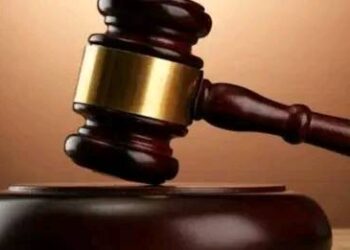PRESIDENT Mnangagwa has approved the appointment of a 20-member Bulawayo Water Technical Committee to oversee the rapid improvement of water and sanitation services in the city over a 100-day period.
The committee is chaired by former chair and dean in the faculty of engineering at the National University of Science and Technology (NUST), Dr Annatoria Chinyama.
Members are drawn from the Ministry of Lands, Agriculture, Fisheries, Water and Rural Development, water engineers from Zinwa, Bulawayo City Council, public health practitioners, the Environment Management Agency (EMA) and members of the academia.
A similar technical committee was recently put in place in Harare by the Government to improve the water supply situation.
Announcing the committee yesterday in Bulawayo, Lands, Agriculture, Fisheries, Water and Rural Development Minister Dr Anxious Masuka said the committee has a historic task as they have been called by President Mnangagwa to assist the city to ensure that there is a sustainable and adequate supply of water.
“A Technical Committee, in terms of Section 6 (1) (b and c) of the Water Act (Chapter 20: 24) as read with the ZINWA Act (Chapter 20:25) section 5 (1) (b and e) be formed to implement the project within a 100-day period.
“The terms of reference of the technical team on Bulawayo Water and Sanitation Services 100-day improvement are to rehabilitate the Mzingwane dam booster station, including transformer upgrade to increase delivery of water from current 125 megalitres per day to 175 megalitres per day.”
“The task also includes the upgrade of the 2,8km 110 mm PVC pipeline in Cowdray Park water mainline to 315 mm PVC pipeline so that all the 25 000 households in Cowdray Park get water at the right pressure,” said Minister Masuka.
Another task of the committee is to ensure the sustainable operation of the Nyamandlovu Aquifer Water Supply system to constantly supply 16 megalitres per day. Dr Masuka added that the technical team will strive to ensure improved potable water supply coverage in the city from 125 megalitres per day to a minimum 175 mega litres per day.
He said another key term of reference is to produce a short, medium and long-term plan for sustainable improvement of water and sanitation services. Bulawayo residents continue to endure prolonged water cuts, sometimes more than a week in some suburbs, at a time when some parts of the country are experiencing an outbreak of cholera and diarrhoea.
The situation is worsened by the vandalism of transformers and boreholes at Epping Forest and Nyamandlovu, which reduced the pumping capacity from 20 ML to 4 ML a day. This has affected 60 000 residents who rely on water from the aquifer.
The vandalism of electricity and water infrastructure has been described as a national security threat, and last year the Government set up an inter-ministerial committee to find a lasting solution to the issue.
The committee is composed of representatives from the ministries of Lands, Agriculture, Fisheries, Water and Rural Development, Energy and Power Development, Local Government and Public Works and Home Affairs and Cultural Heritage as well as the Bulawayo Provincial Affairs and Devolution, Minister Judith Ncube.
While the completion of the Lake Gwayi-Shangani is expected to bring a lasting solution to Bulawayo’s water woes, the Government has been pumping resources to rehabilitate boreholes at the Nyamandlovu Aquifer to augment bulk water supplies from dams, which continue to receive inadequate inflows due to poor rains.
In 2020, the Treasury released $205 million through the Zimbabwe National Water Authority to rehabilitate 10 boreholes, which increased the city’s daily borehole water drawdown to about 20 megalitres. However, the bulk of infrastructure has been vandalised and the Bulawayo City Council is only able to pump between nine to 10 mega litres a day which at times is reduced to as little as 3ML.
Dr Masuka outlined immediate intervention to ease the water challenges faced by Bulawayo.
“There is a need to upgrade the Mzingwane Booster pumps (US$900 000) and Cowdray Park Water Mains (US$ 350 000) and Nyamandlovu Aquifer (US$300 000) giving a total of about US$1,55 billion which is required for immediate interventions to solve the city’s water supply challenges.
“This will allow Bulawayo city to have 150 megalitres per day against an unrestricted demand of 174 mega litres per day.”
Dr Masuka said the rapid expansion of Cowdray Park suburb created significant challenges to the city’s water supply infrastructure.
“With over 25 000 stands, the 110 mm PVC pipe that feeds the areas is not sufficient to provide adequate water pressure and flow to all households. This has resulted in some households receiving water at low pressure and others not receiving water at all. In order to address this issue, we propose increasing the size of the pipeline to ensure that all households in the area have access to water,” he said.
Source – The Herald








